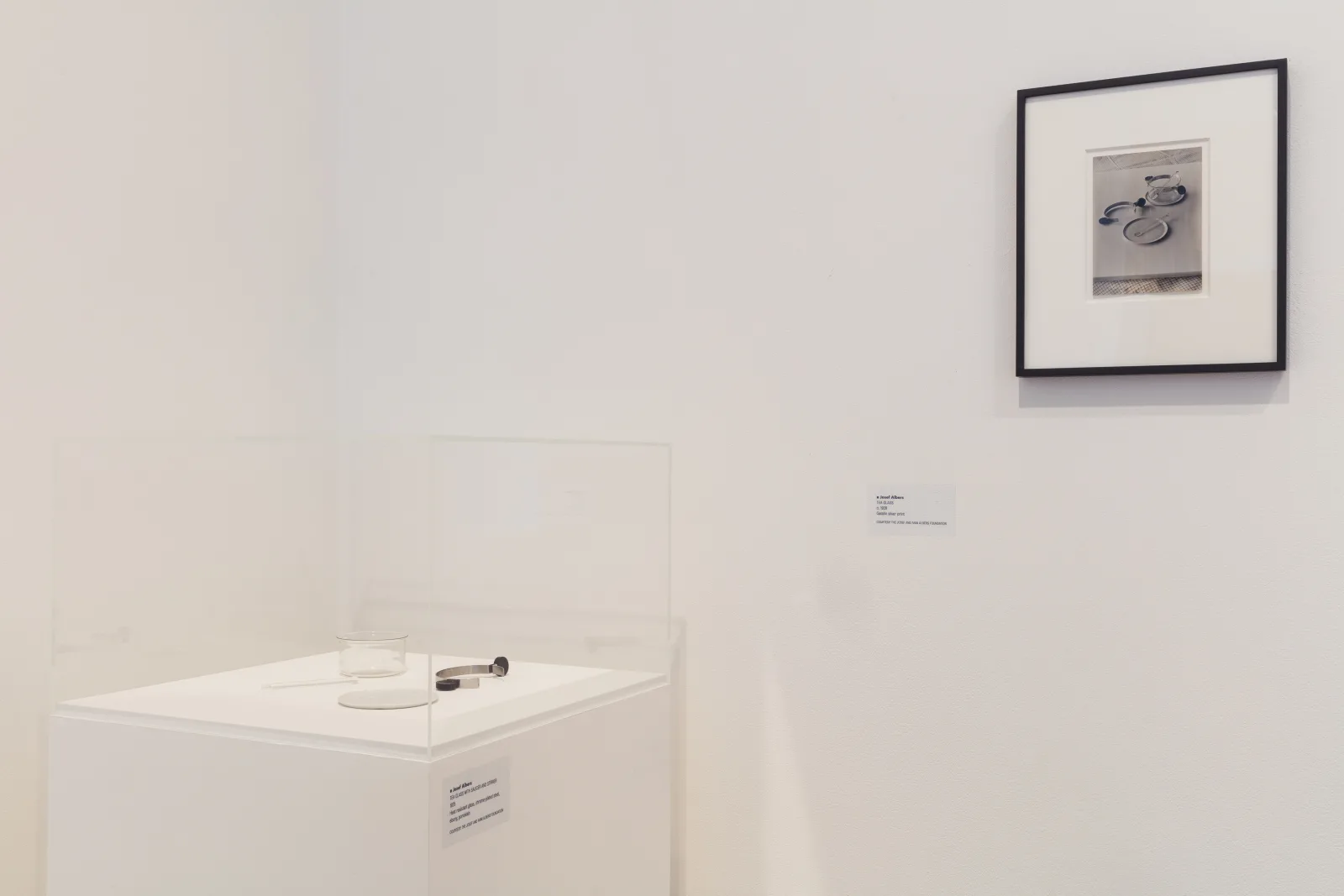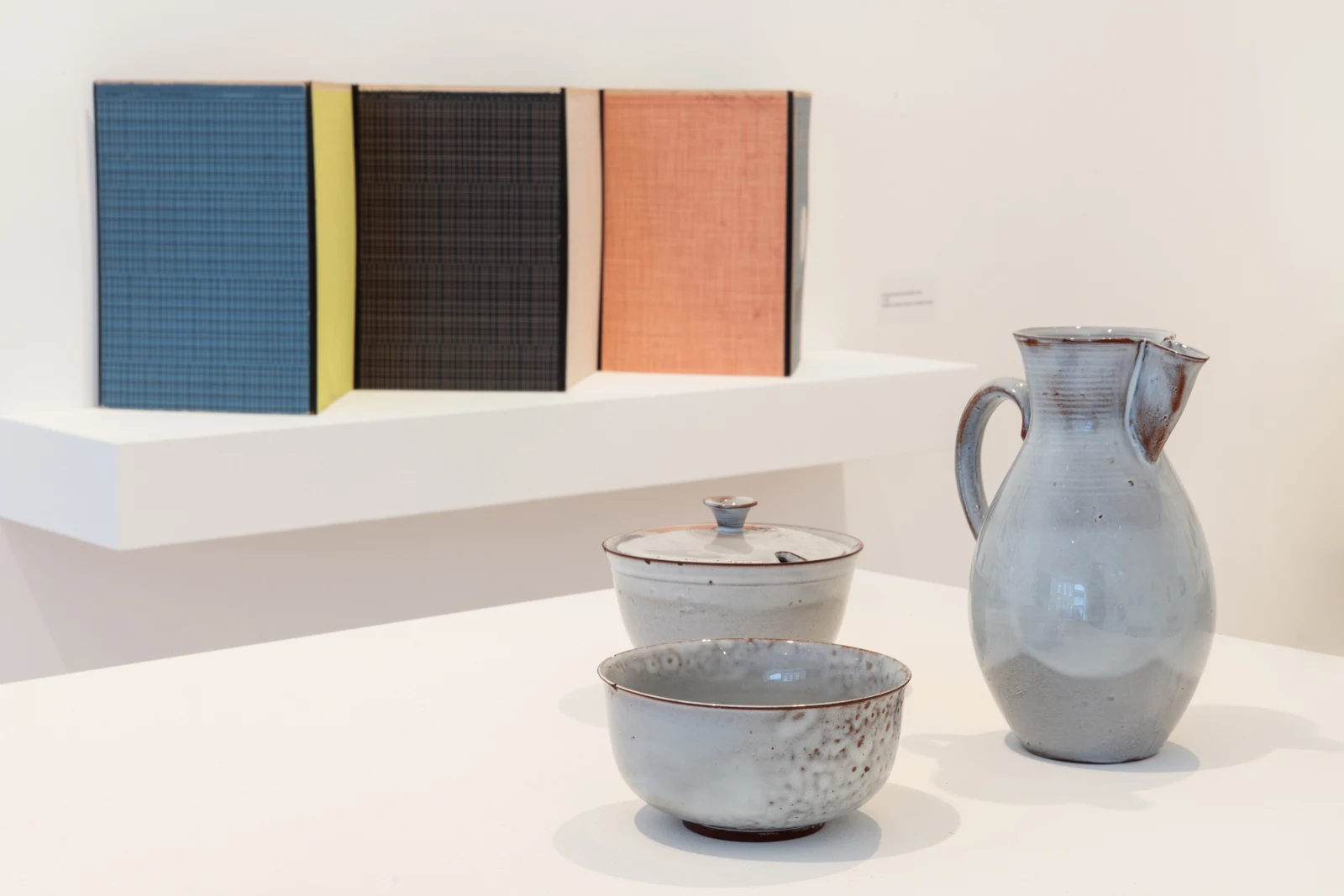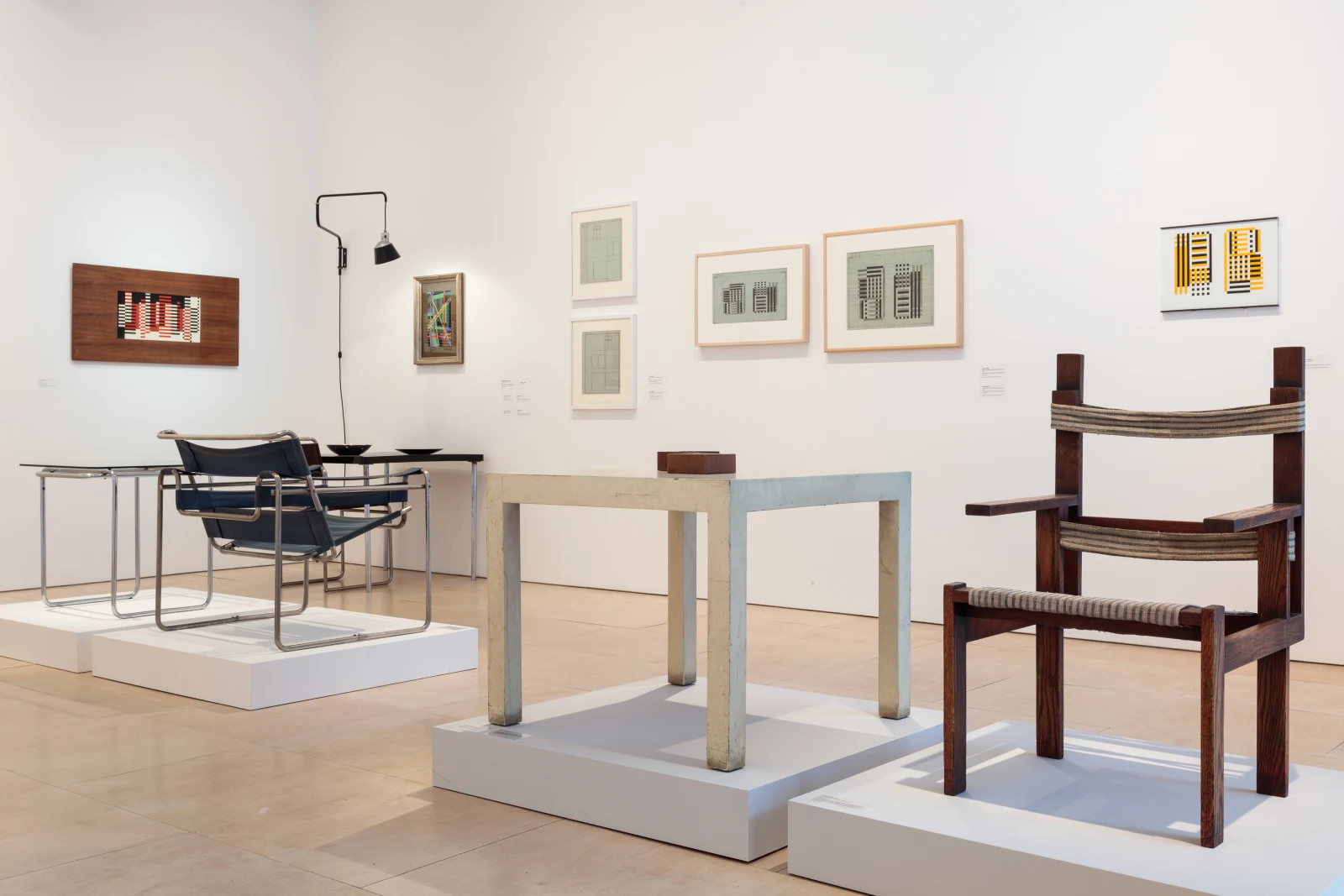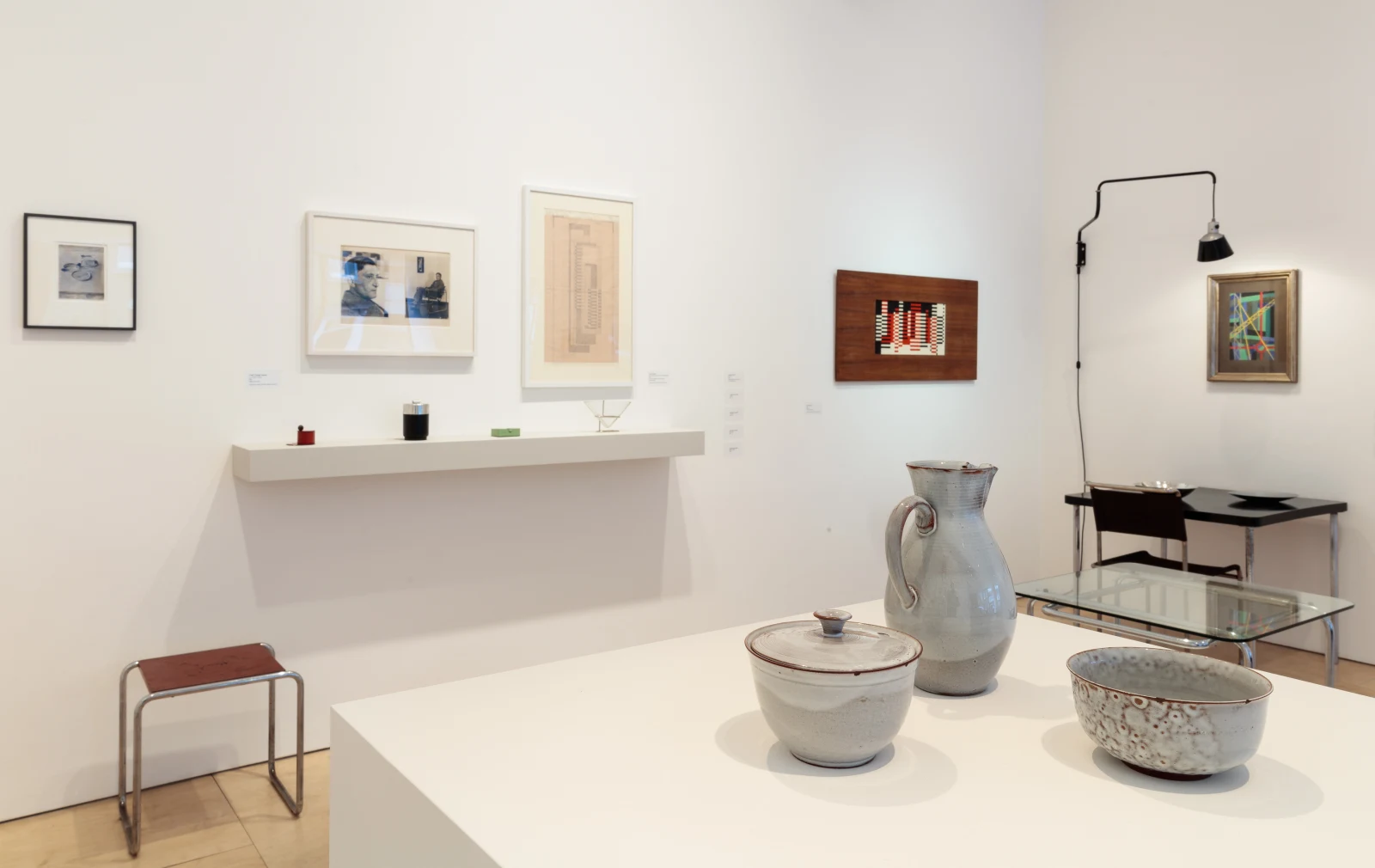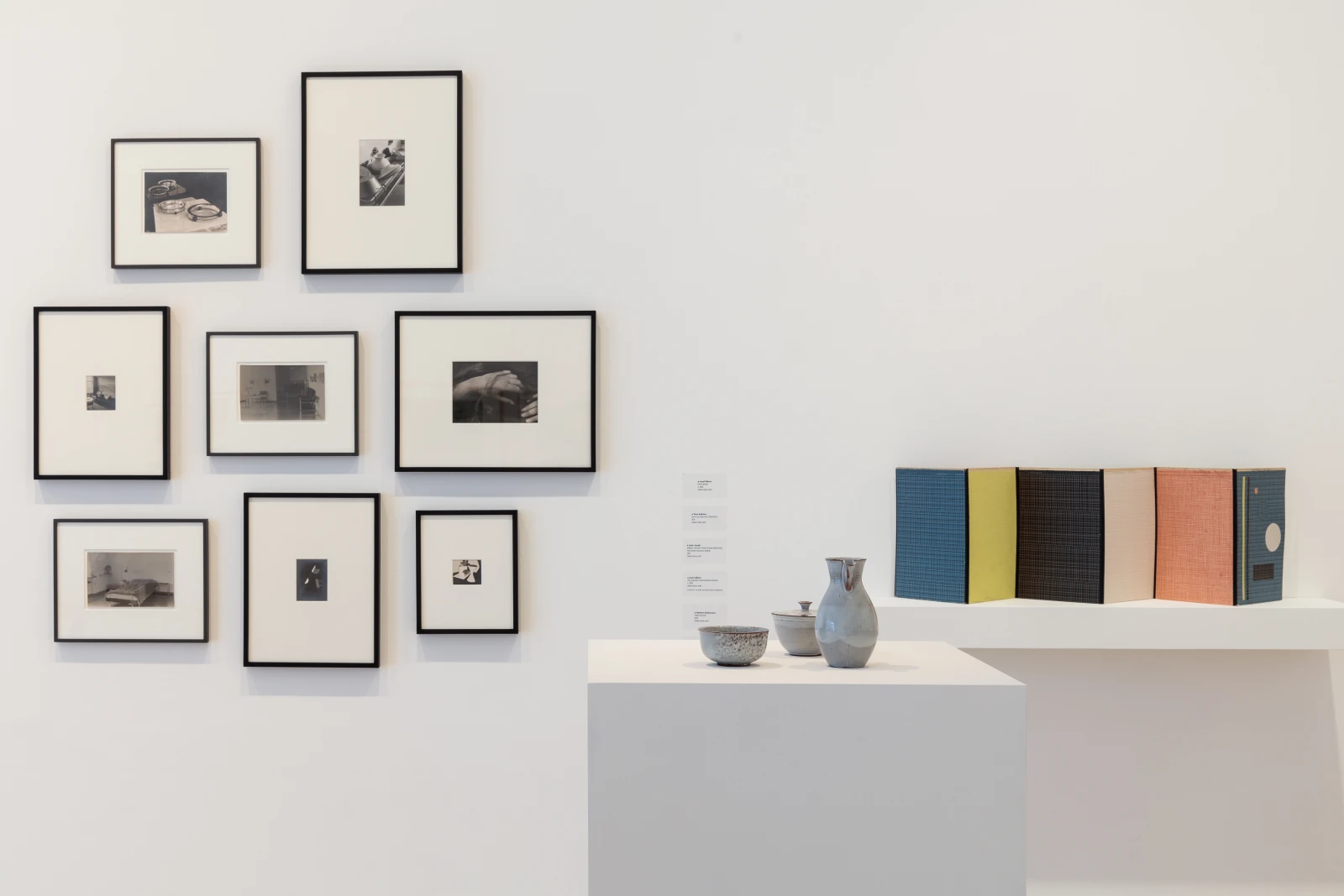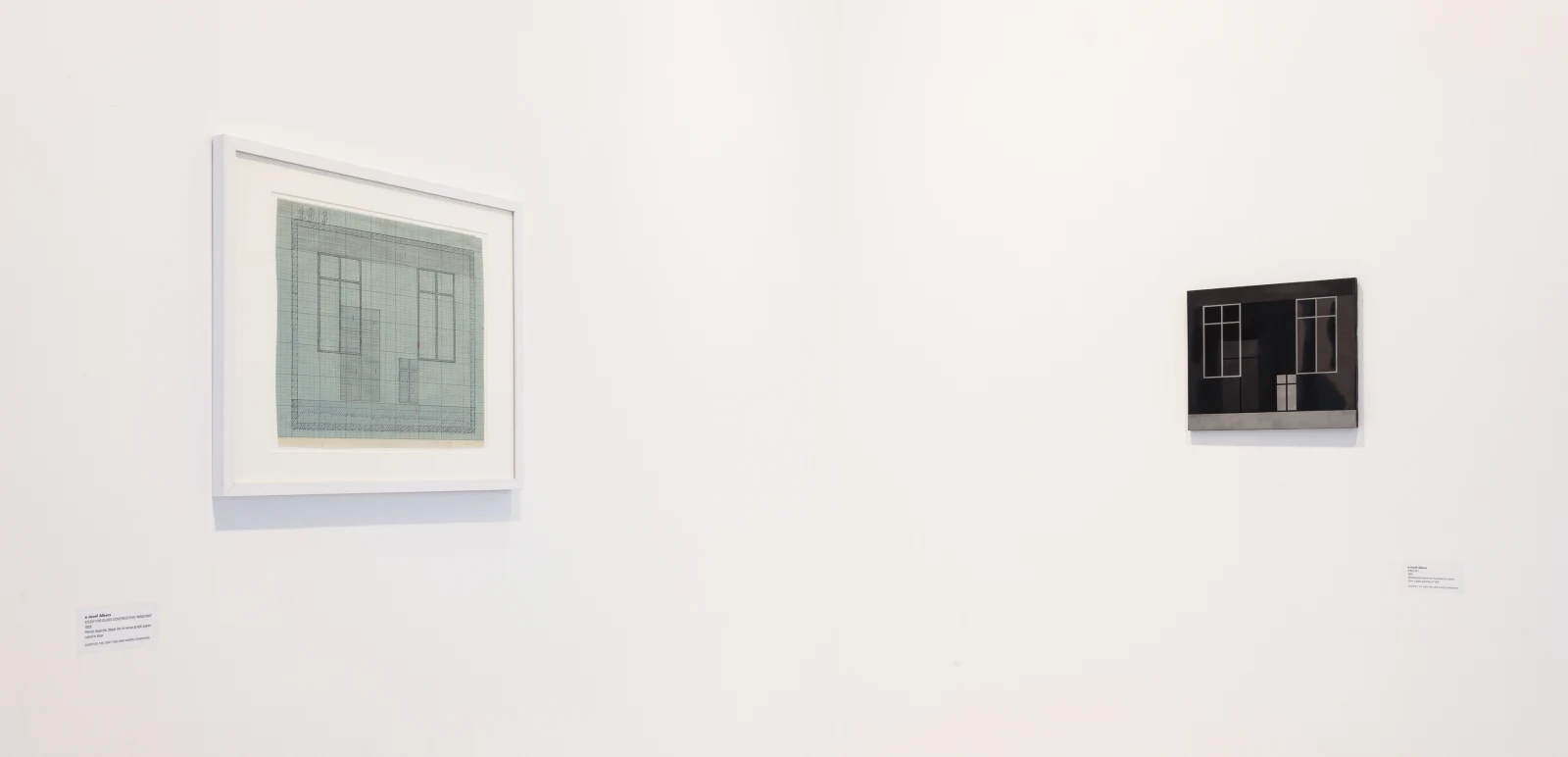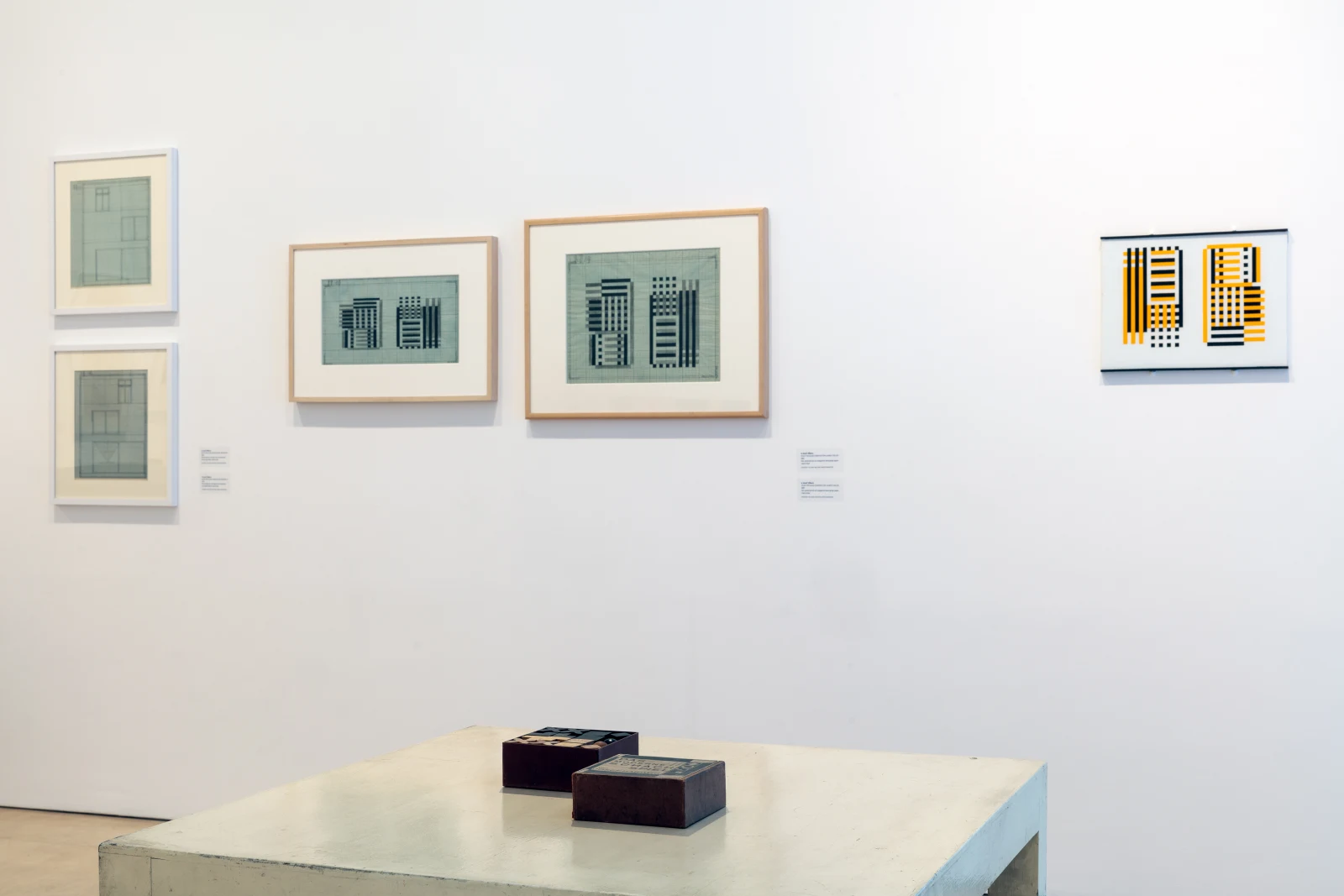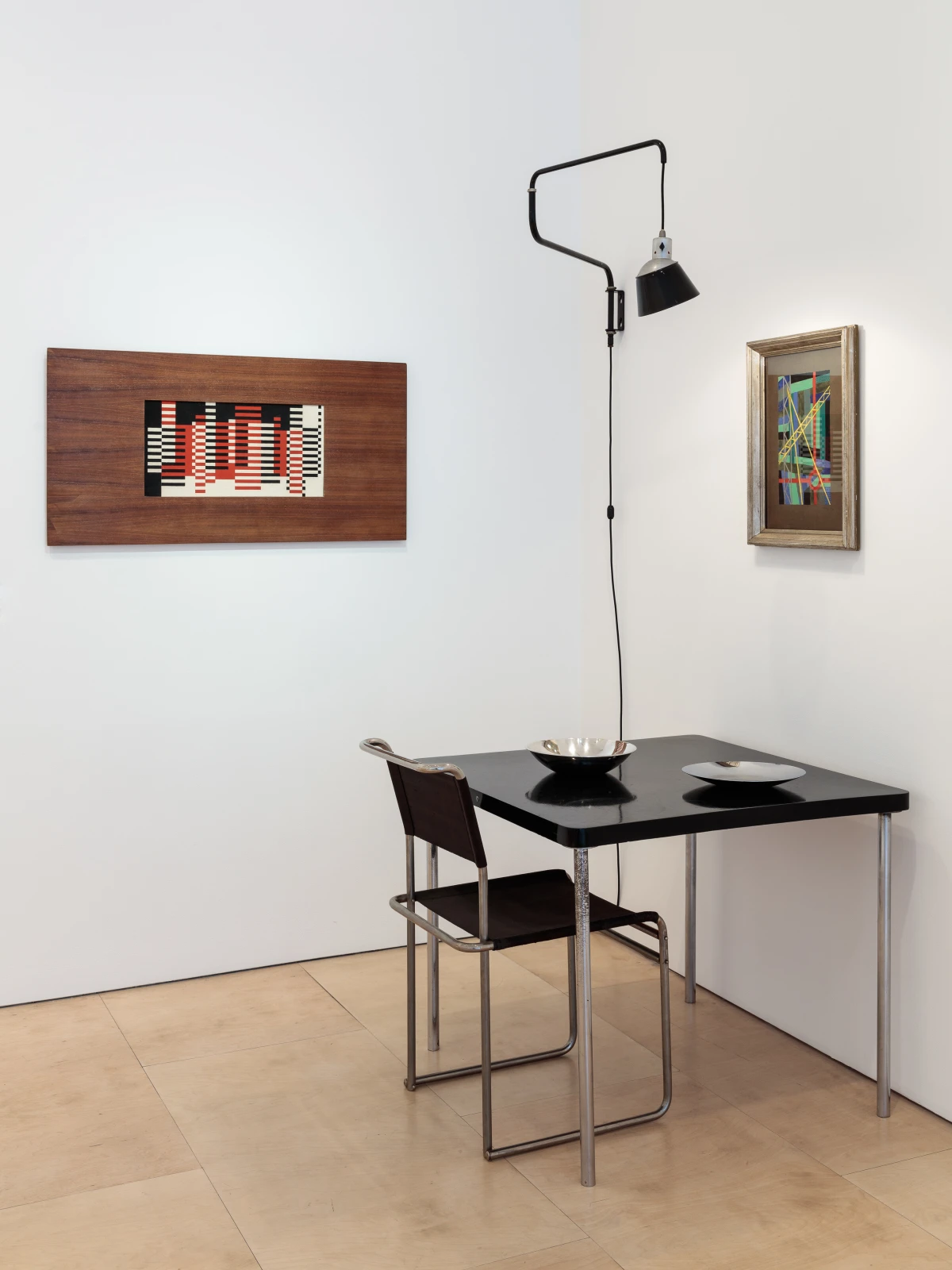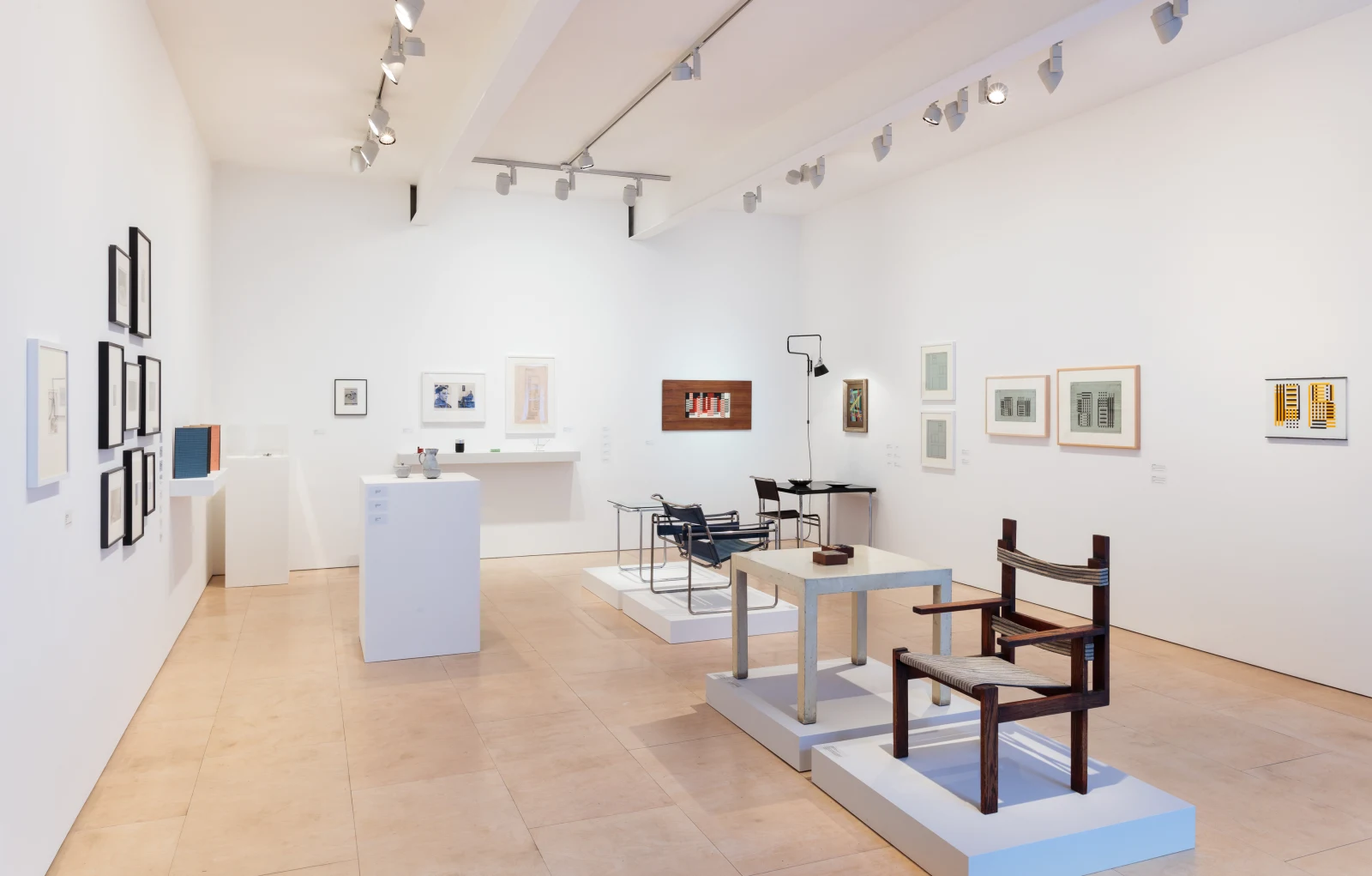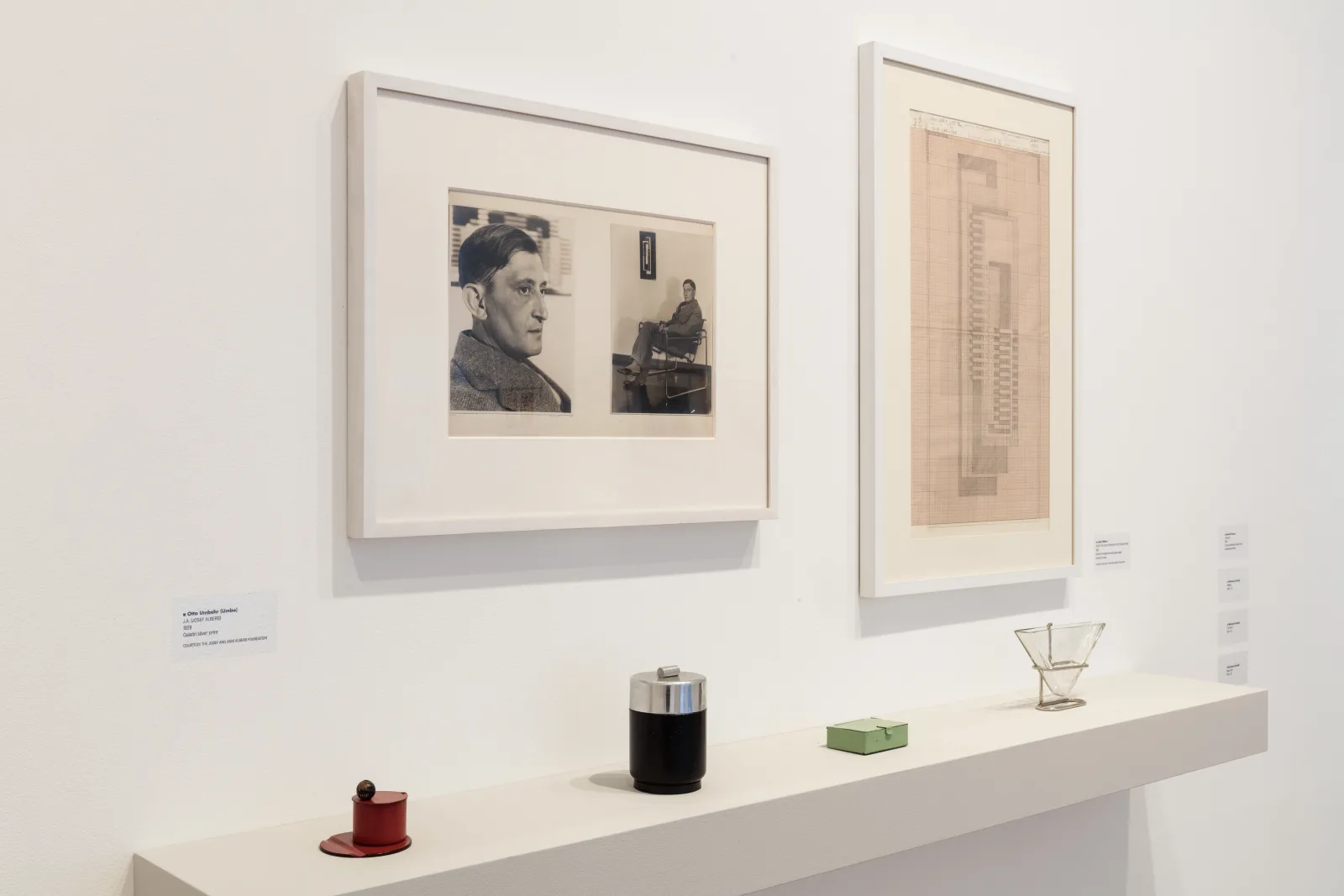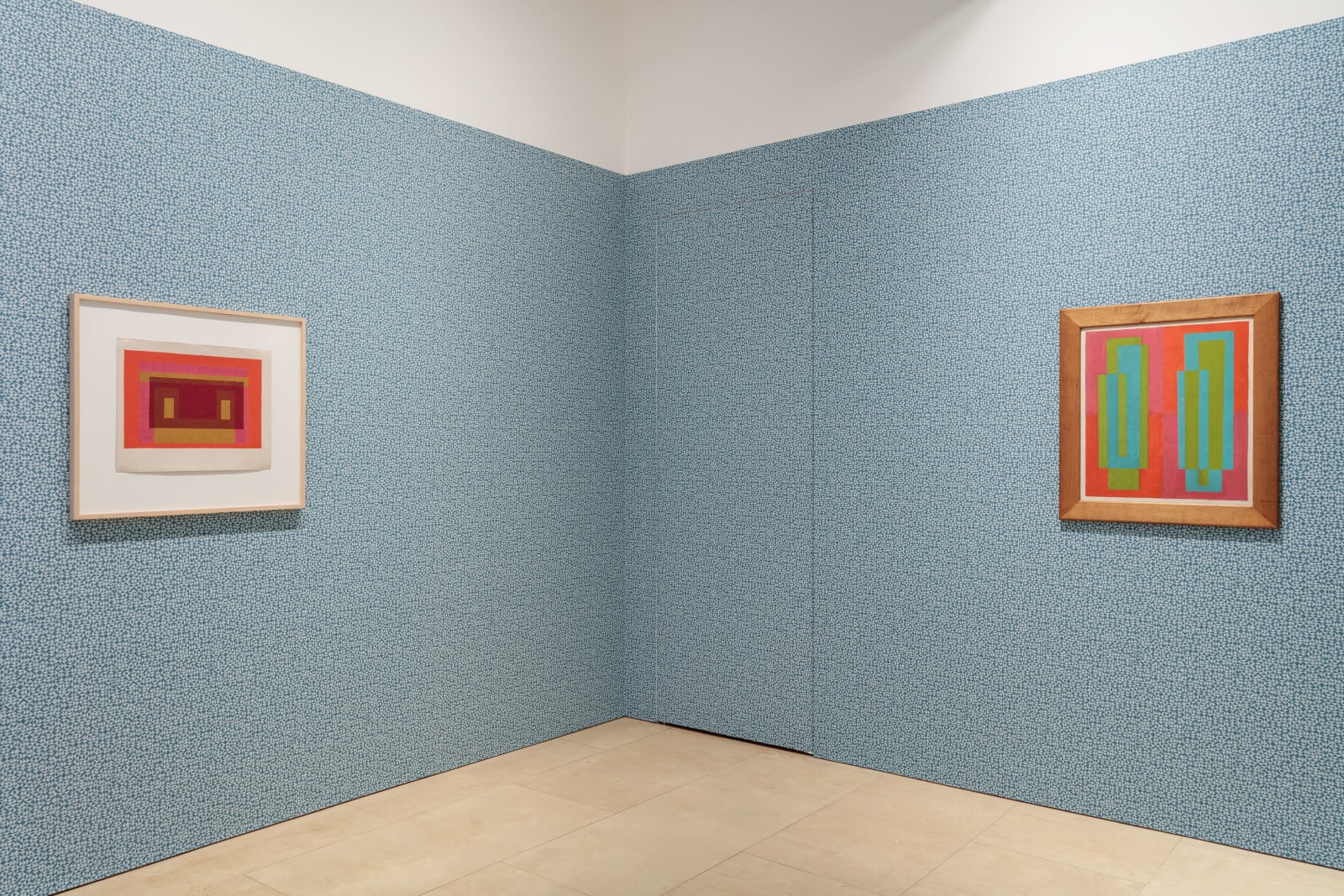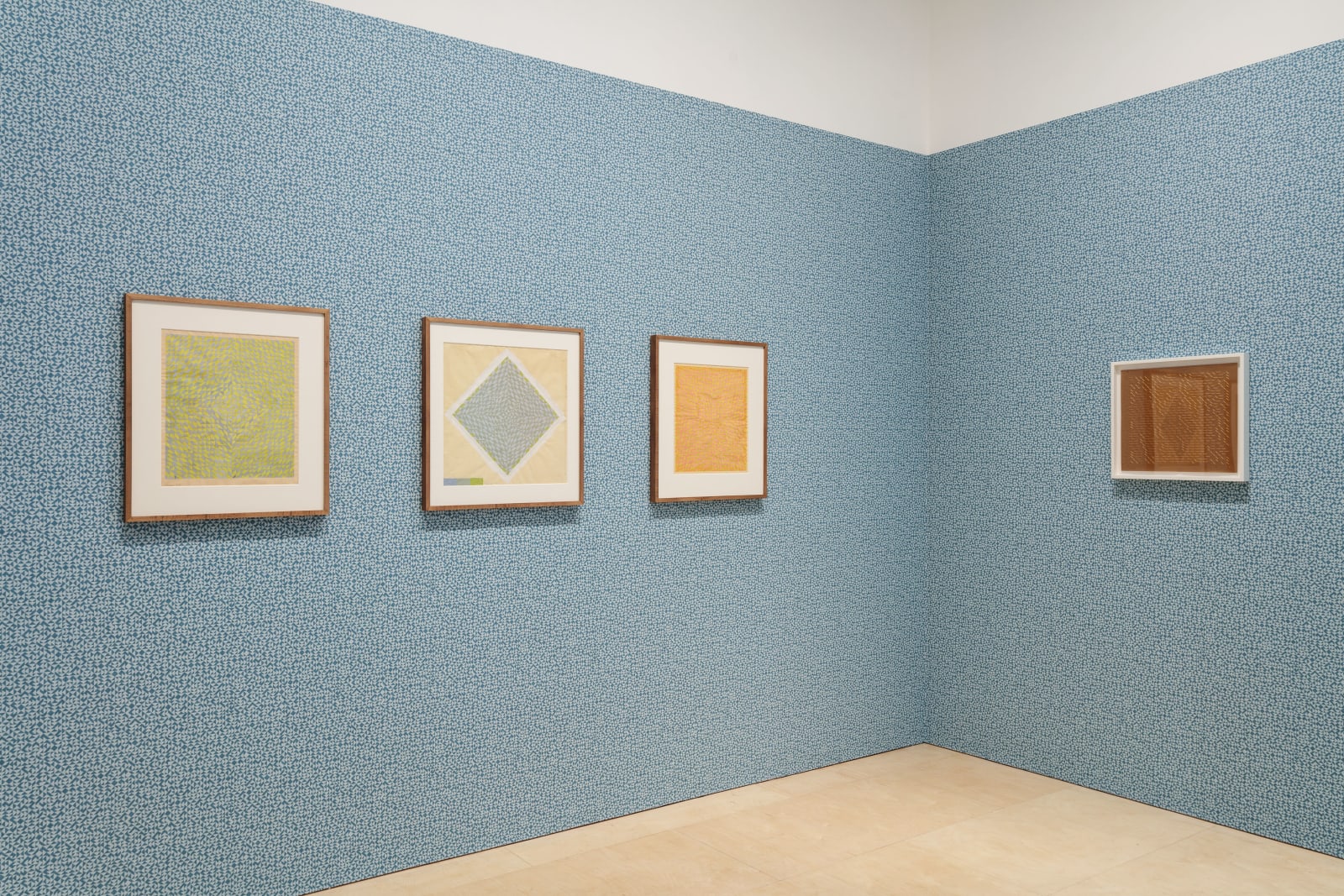
Albers & The Bauhaus
Overview
'Albers & the Bauhaus' will make its focus the world-changing designs that emerged out of the revisionist school founded in 1919 by the architect Walter Gropius. Central to the exhibition will be work made by Josef Albers in the 20’s and 30’s.
Albers was a key player in the movement, joining as a student in 1920 and leaving a master in 1933, when the Bauhaus closed under pressure from the National Socialists. In the largest exhibition of Bauhaus art and design mounted by a commercial gallery, 'Albers & the Bauhaus' will feature Albers’s drawings, photographs, paintings, design pieces and glass-works, many of which have never been shown in the UK before. Furniture, objects, and photographs by Marcel Breuer, the ceramicist Otto Lindig, and Marianne Brandt will shown alongside Albers’s work, to create a full picture of the Bauhaus, Albers’s pivotal role in it, and its huge influence over design and art. The exhibition brings together material lent by the Josef and Anni Albers Foundation as well as material from private collections.
The Bauhaus extolled the idea of unifying craft and art with mechanical manufacturing processes, made possible by the still relatively recent industrial revolution. They felt that good design would improve people’s lives. Ornament was deemed unnecessary, and the simplicity of design that many of us now take for granted and value so highly was borne out of this need to wipe the slate clean. They were to start again, creating the perfect chair and the perfect cup, standard types that would serve many uses. Of his induction into the Bauhaus, where he would form his unique language of abstraction, Albers later said that “I was 32... I threw all the old junk overboard and went right back to the beginning again. It was the best thing that I ever did in my life”.
The Bauhaus was an environment in which the line between decorative and fine arts and indeed industrial design was intentionally blurred. Albers created furniture and objects in line with the wider ethos displayed by colleagues such as Marcel Breuer and Marianne Brandt. He made furniture for Gropius’s office, produced a demountable chair and made objects in glass. His Tea Glasses (1925) are more in line with the spirit and aesthetic of the Bauhaus, they are perhaps his finest design work but sadly never went into production. The exhibition will show one of these rare pieces – of which only a handful survive. From 1925 Albers began to make pictures in glass that are the first fully resolved examples of his trademark geometry. ‘TRELLIS’ (1929) is one such work. The ‘Homage’ paintings, begun nearly three decades later, create a sense of overlapping colour and an illusory depth and the luminosity of Albers’s glass-works.
Albers was a key player in the movement, joining as a student in 1920 and leaving a master in 1933, when the Bauhaus closed under pressure from the National Socialists. In the largest exhibition of Bauhaus art and design mounted by a commercial gallery, Albers & the Bauhaus will feature Albers’s drawings, photographs, paintings, design pieces and glass-works, many of which have never been shown in the UK before. Furniture, objects, and photographs by Marcel Breuer, the ceramicist Otto Lindig, and Marianne Brandt will shown alongside Albers’s work, to create a full picture of the Bauhaus, Albers’s pivotal role in it, and its huge influence over design and art. The exhibition brings together material lent by the Josef and Anni Albers Foundation as well as material from private collections.
The Bauhaus extolled the idea of unifying craft and art with mechanical manufacturing processes, made possible by the still relatively recent industrial revolution. They felt that good design would improve people’s lives. Ornament was deemed unnecessary, and the simplicity of design that many of us now take for granted and value so highly was borne out of this need to wipe the slate clean. They were to start again, creating the perfect chair and the perfect cup, standard types that would serve many uses. Of his induction into the Bauhaus, where he would form his unique language of abstraction, Albers later said that “I was 32... I threw all the old junk overboard and went right back to the beginning again. It was the best thing that I ever did in my life”.
The Bauhaus was an environment in which the line between decorative and fine arts and indeed industrial design was intentionally blurred. Albers created furniture and objects in line with the wider ethos displayed by colleagues such as Marcel Breuer and Marianne Brandt. He made furniture for Gropius’s office, produced a demountable chair and made objects in glass. His Tea Glasses (1925) are more in line with the spirit and aesthetic of the Bauhaus, they are perhaps his finest design work but sadly never went into production. The exhibition will show one of these rare pieces – of which only a handful survive. From 1925 Albers began to make pictures in glass that are the first fully resolved examples of his trademark geometry. ‘TRELLIS’ (1929) is one such work. The ‘Homage’ paintings, begun nearly three decades later, create a sense of overlapping colour and an illusory depth and the luminosity of Albers’s glass-works.
Marcel Breuer joined the Bauhaus in the same year as Albers. The exhibition includes a rare example of his ‘Wassily Club Chair’ (1927) and his ‘Lattenstuhl’ (1923). These works would influence generations of designers to follow. Marianne Brandt’s objects created in the Bauhaus’s metal workshops had a similarly significant influence. These Bauhaus designs remain startlingly contemporary and the exhibition will serve as a reminder that the simplicity and importance of the ideas born out of the Bauhaus can still, nearly 100 years after its inception, teach us much about how the art and design around us can improve our lives.
A second part of the exhibition will explore the work Josef and Anni Albers made after the Bauhaus closed, and following their move to the USA in 1933. The two met at the Bauhaus, marrying in 1925. Against a backdrop of an Anni Albers designed wallpaper that has only recently gone into production, we will see works on paper and paintings from the 1940’s to 70’s by both artists. Showing the work of Josef and Anni Albers together is a celebration of the synergies, shared interests, and influences of the two artists. This display will also demonstrate development of Josef’s work in the years that precede the ‘Homage to the Square’ paintings, which had such a huge influence on abstract painting and colour theory.
'Albers & the Bauhaus' will make its focus the world-changing designs that emerged out of the revisionist school founded in 1919 by the architect Walter Gropius. Central to the exhibition will be work made by Josef Albers in the 20’s and 30’s.
